April 3rd, 2024 —
We woke up Wednesday morning still riding the high from our unforgettable day at North Berwick. The two-hour car ride across the country allowed ample time to continue recounting every shot from our 36 holes around the West Links (and listen to both sides of Pink Floyd’s The Wall, the trip’s unofficial soundtrack).
When we arrived at Prestwick, it quickly became clear that this was going to be a vastly different experience than anything we had ever encountered in the world of golf. Prestwick’s influence on the game of golf and golf course architecture cannot be understated. Prestwick is home to the first ever Open Championship in 1860 – it has hosted another twenty-four Opens until 1925 – and is the birthplace of the phrase “Champion Golfer of the Year”. It truly is a living, breathing museum, and walking around the clubhouse quite literally feels like a walk through time.
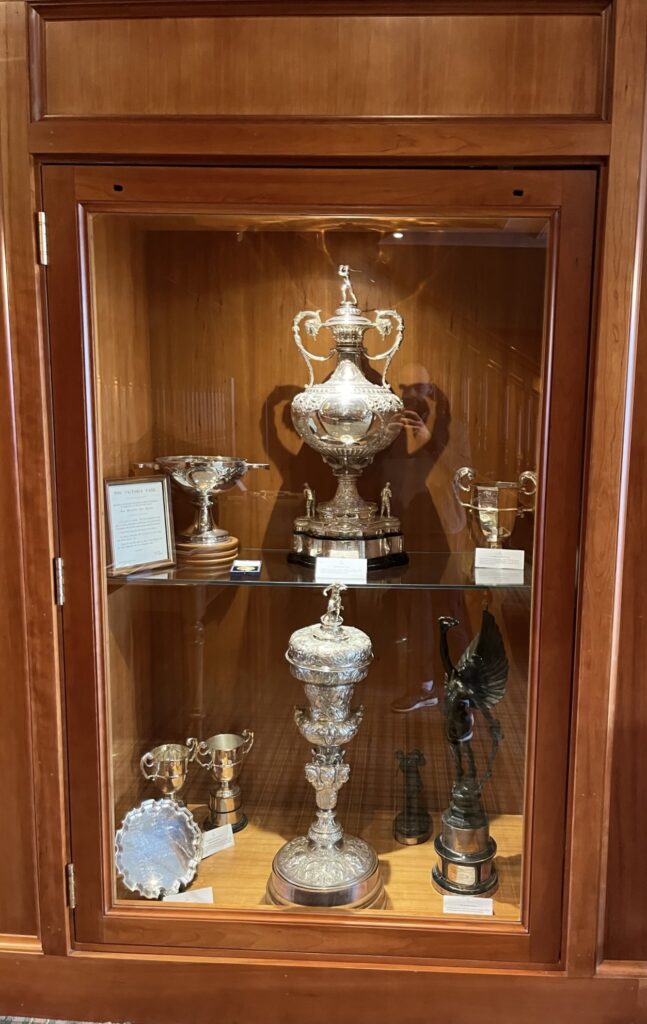

After a quick traditional lunch of haggis bonbons and Scottish steak, our journey through this historic museum was really about to begin. The first hole establishes the tone for the day: bold, dramatic, and entirely unique. A long iron off the tee left us short of the trouble that pinches the fairway – the collection of droplet-like dunes to the left and the wall that runs down the entirety of the right side of the hole. (The wall separates the course from the railway tracks, which is the namesake of the hole: “Railway”.) This has to be one of the best opening holes in all of golf.


(Every hole at Prestwick is worth writing about but we would be here for far too long so I’ll do my best to highlight a few.)
Like much of Prestwick, the par 5 third hole is unlike anything I’ve ever seen in golf. Our caddie Chris instructed us to hit another long iron off the tee, favoring the left side of the fairway. The second shot is difficult to describe: almost 90 degrees right of the tee shot just played, you carefully (and blindly) blast a metal over the enormous Cardinal Bunker and its wooden sleepers. The thumb print of a green is impossibly small and brilliantly guarded by moguls and mounds. How can you dream up a hole like this? How could it possibly get better from here?

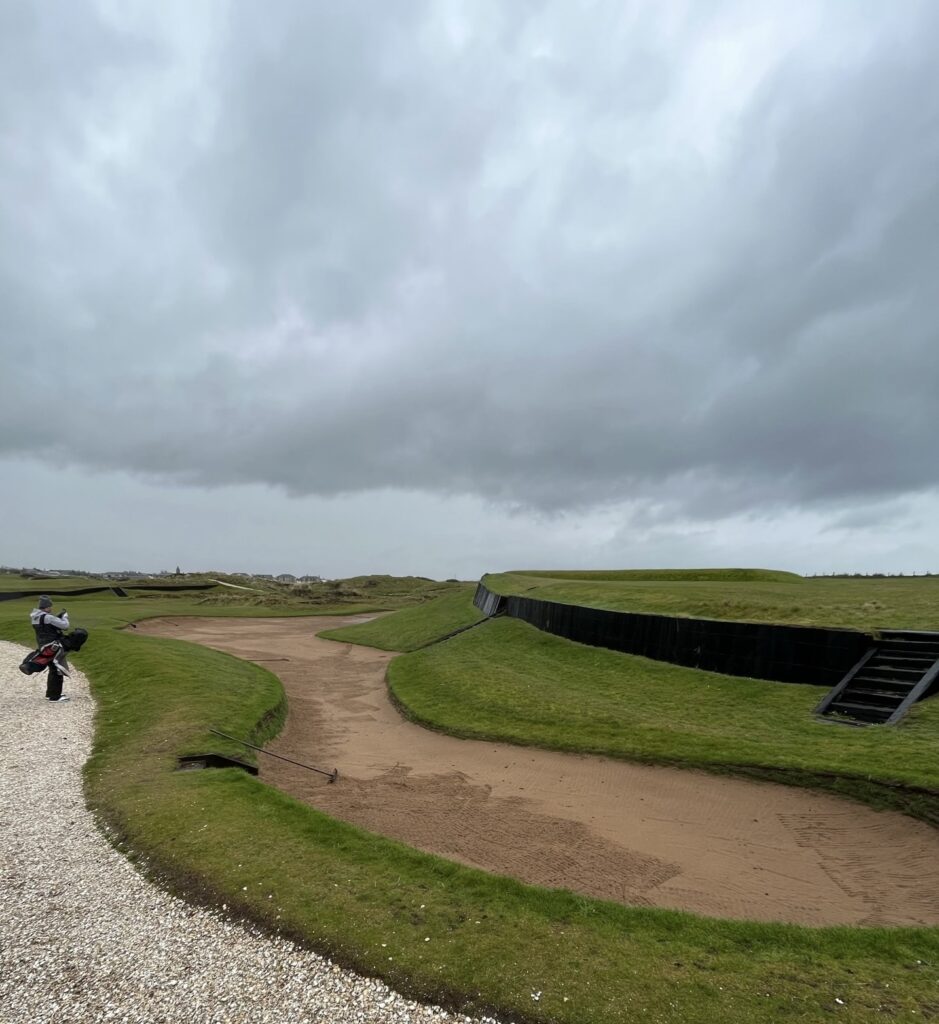
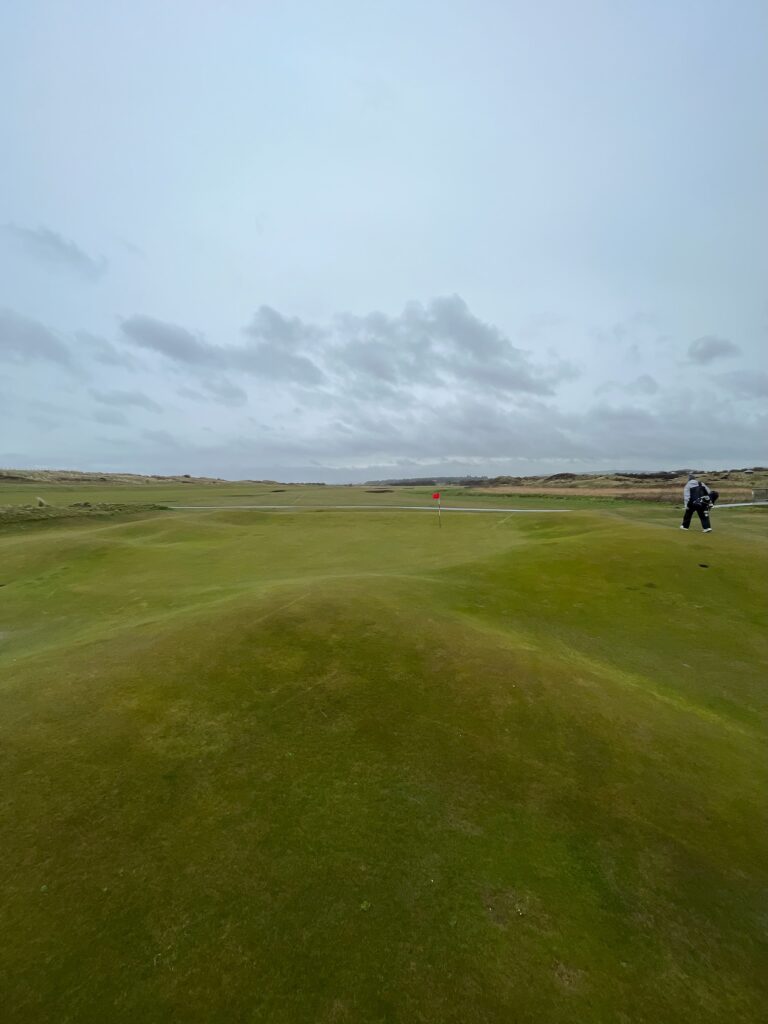
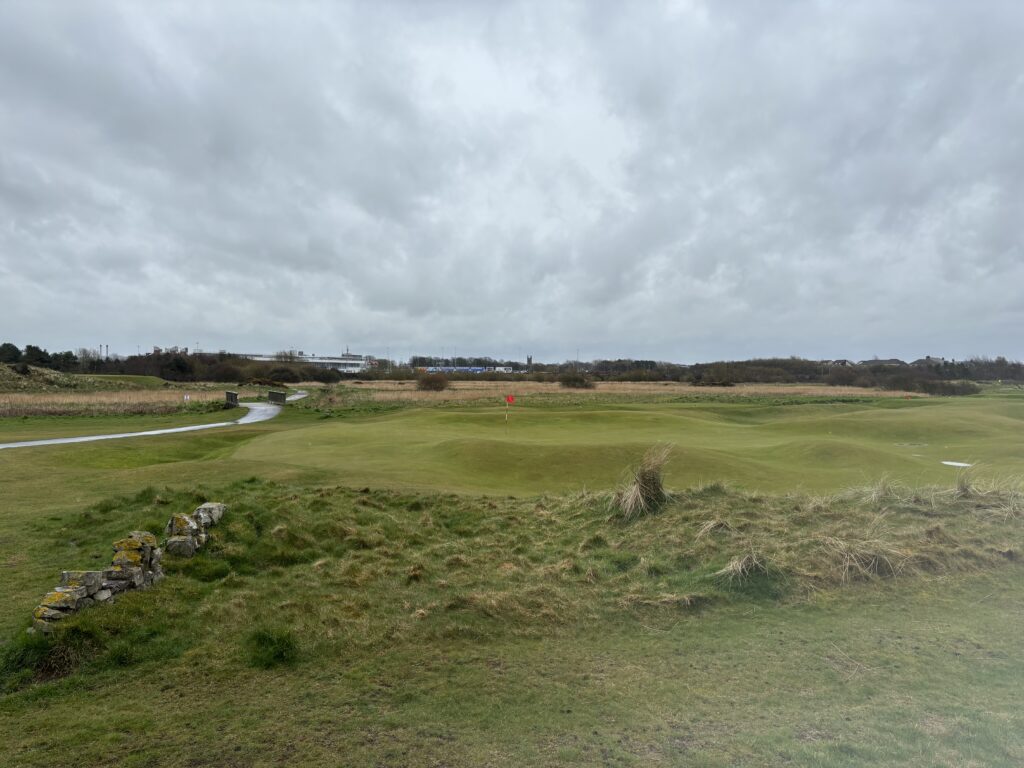
Desperately in need of a victory, Luke and Tim got off to a dream start. After a birdie from Luke on #2 (dart szn) and a most impressive birdie from Tim on #3, Phil and I found ourselves in a hole that we wouldn’t climb out of (not for lack of effort – we did battle back to tie the match on through 16).
The fourth hole is believed to be the first dogleg in golf, with Pow Burn lining the right side of the hole – considered a great influence over the father of American golf course architecture, Charles Blair MacDonald (and an inspiration to his now famous Cape Hole template). We then arrived at the par 3 fifth hole: “Himalayas”. The thing about Prestwick is that you can’t draw comparisons because there is simply nothing else like it in the world. The fifth is a 200+ yard blind par 3 that plays over a massive, 40-foot tall dune. The tee marker signals whether the pin is in the front, middle, or back of the green, and we took aim over the blue colored sleeper. The anticipation of hiking up the sand dune to see where our balls ended up is second to none – one of the most imaginative reveals in golf.
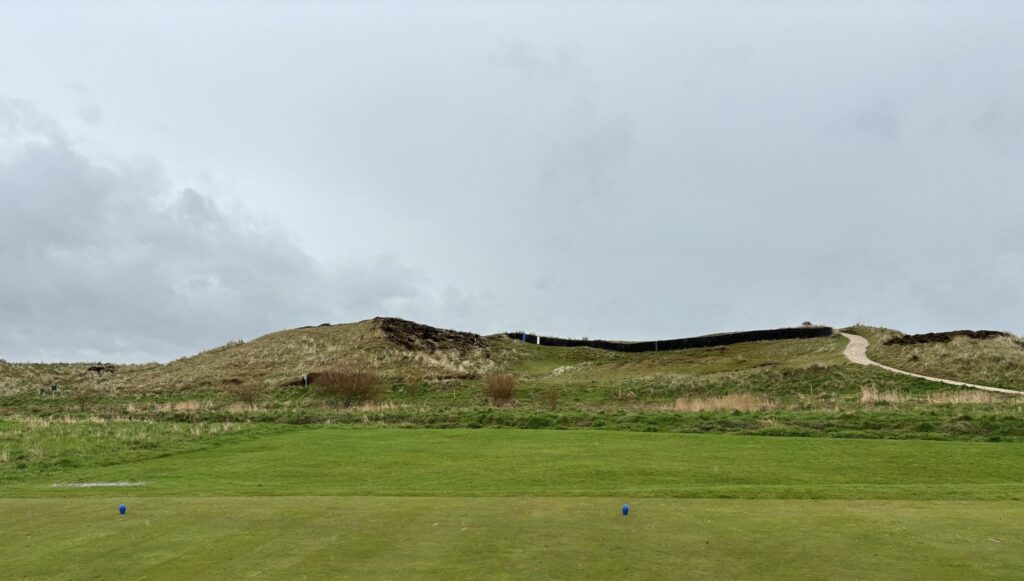
Holes 6-9 (all par 4s) play on the other side of the Himalayas dune ridge and further exemplify the variety and dynamic pacing of Prestwick. For his “approach” shot on six, Tim putted down to the slender green from 50 or so yards. We turned into the teeth of the wind for two brutish par 4s in seven and eight, where the temperature seemed to drop 10 degrees, and we were forced to blast 3 woods into the greens for our seconds. And shoutout to whomever cut the pin on nine – talk about waking up and choosing violence!
The routing at Prestwick is thoughtful and imaginative, as it dances across the property and breaks the traditional mold of links golf routing (out and back). Prestwick was originally a 12-hole layout until it was expanded to 18-holes in 1882. The six “new” holes occupy a much more expansive footprint than the original twelve – in fact that piece of land is larger than the original. Tom Doak’s quote about how the best routed golf courses mirror the way that you would wander around a piece of land for the first time came to mind during our round at Prestwick.
After playing the par 4 tenth hole in the opposite direction of “Himalayas”, we met another showstopper par 3 in the eleventh. An elevated tee box that shares a border with nextdoor Royal Troon, the eleventh plays down to a severely right to left canted green surrounded by a symphony of mostly hidden bunkers. Phil and I used this picturesque canvas as a springboard to help claw our way back into the match.

Some of the most dramatic contouring on the course surrounds the green at the par 5 twelfth. “Wall”, as it is named, is protected by a collection of bunkers both left and right. As I struck my second shot, Chris shouted, “This could be the best miss of his life!” My hybrid got no more than 10 feet in the air, split the bunkers, and rode the undulated linksland to finish 8 feet below the hole for eagle (which I missed).
The par 4 thirteenth was one of the most demanding, complete holes we played on the trip. Riding a tail wind, we were able to send our tee shots down this eloquently contoured fairway (which is shared with the sixteenth) and past “Willie Campbell’s grave”. The severe undulations in the fairway mean finding a level lie is near impossible. The approach shot demands such precision – it looked as if we had to land our iron shots onto my small Ikea dinner table – it was one of the most intimidating shots we faced in Scotland.
After turning back into the wind, the par 4 fifteen serves as another stern test. Fifteen, aptly named “Narrows”, inspired another one of CBM’s famous templates (see #15 at National Golf Links of America). Chris told us to “hit the straightest club in your bag” and he was right – the fairway is strategically defended by bunkers and mounds; there is no margin for error. The approach shot is mostly blind and plays over the crest of the dune ridge. Prestwick delivers again with another highly anticipated reveal!
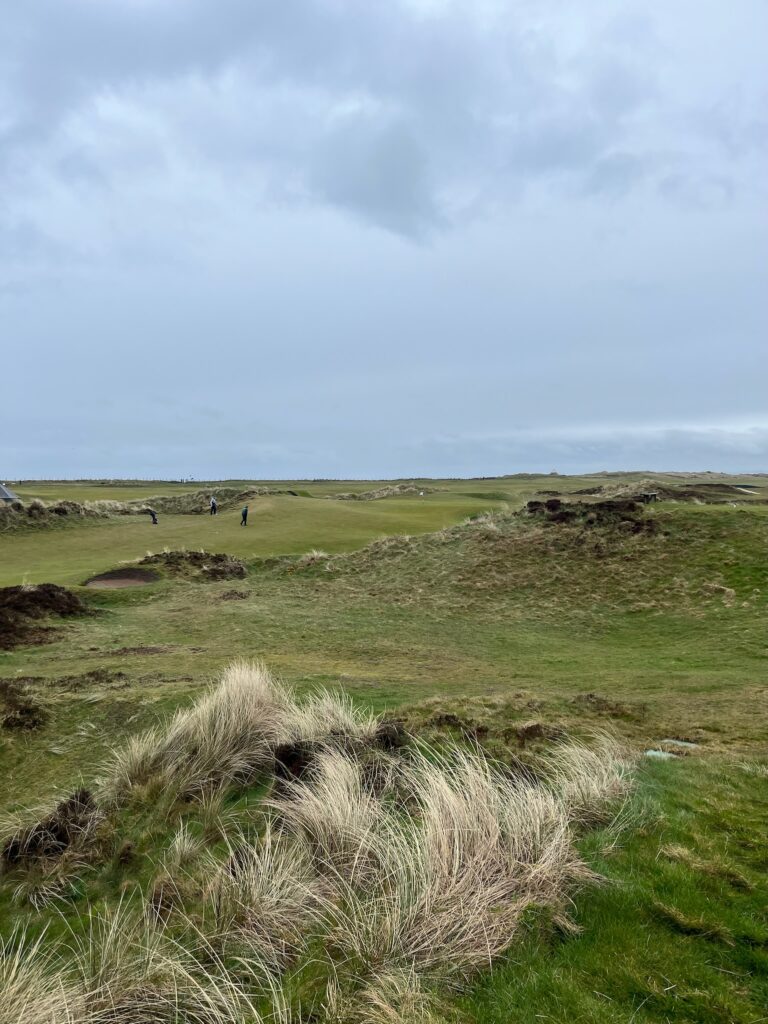
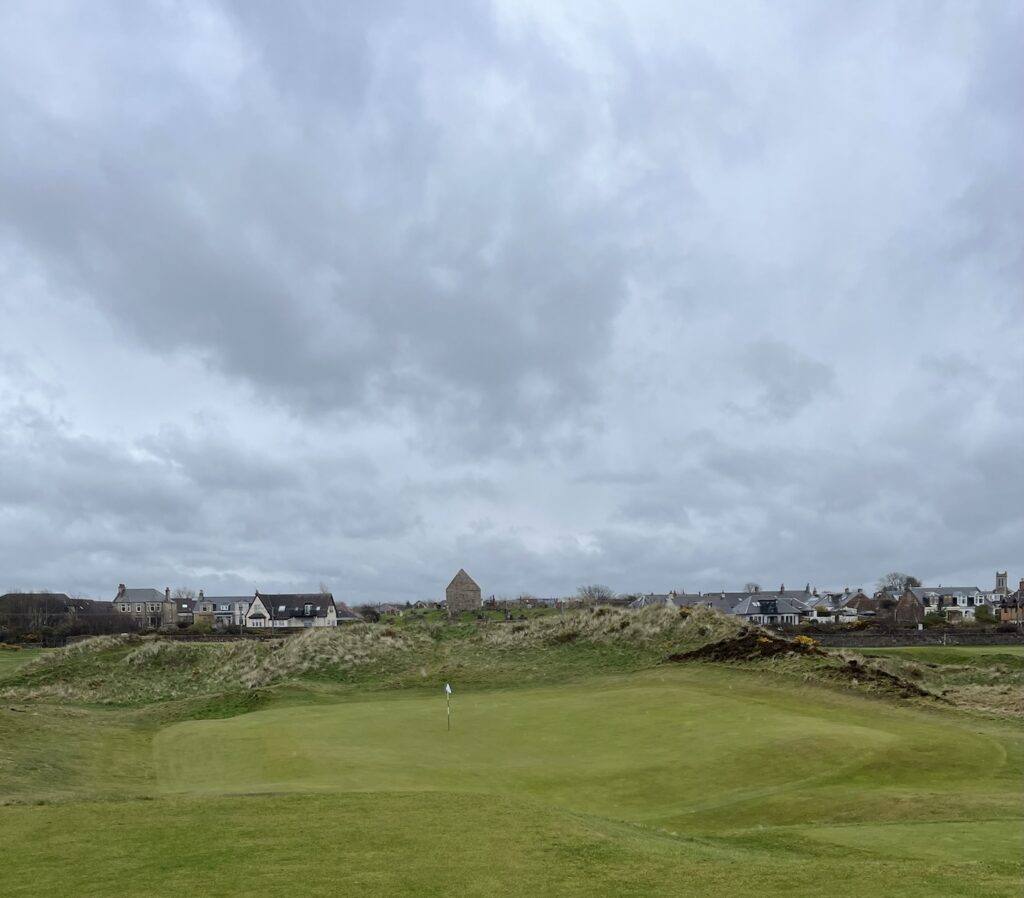
We were greeted with a much more welcoming tee shot on sixteen – more than enough room left (although I used every inch of it for this into the wind “par 3.5”). Playing to a scorecard yardage of only 290 yards, “Cardinals Back” played much longer with the stout wind and heavy rain that started to intensify on #13. The brilliance of the routing reemerges again: the same massive Cardinal Bunker that fronts the second shot on #3 sits waiting short right of the sixteenth green to catch any strays, and “Willie Campbell’s grave” presents itself short left. The green features some of the most artful contouring on property. The pin was at the back of the green in a semi-bowl and led to a “yeahhhh golf shot” from Tim and Phil.
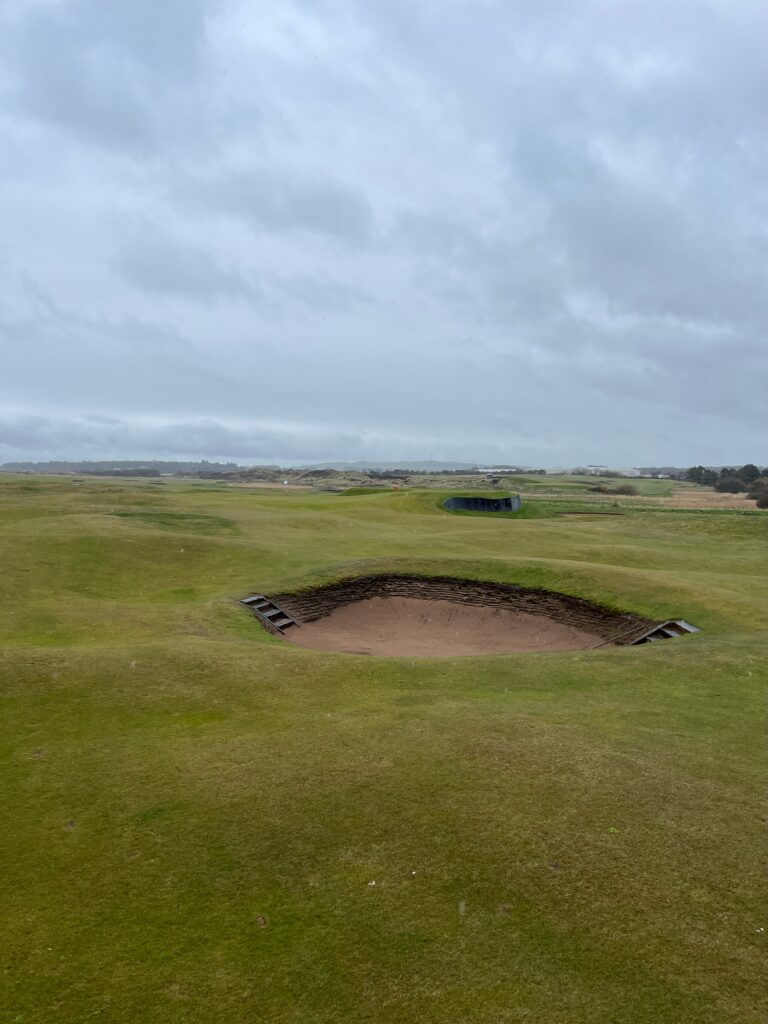
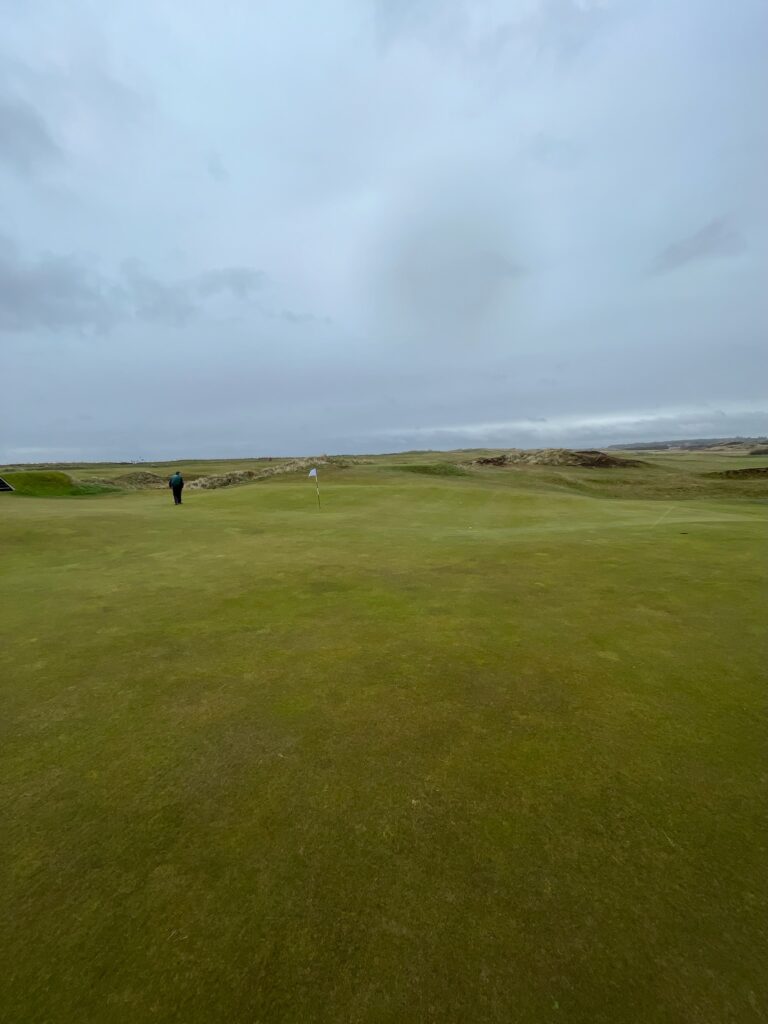
The most quintessential Prestwick golf hole is the par 4 seventeenth: “Alps”. “Alps” is the oldest remaining original hole in Major Championship golf, and is also the origin of another MacRaynor template (see #3 at NGLA). Another exacting tee shot is required to set yourself up for the approach: an iron shot played blindly over a 30-foot tall dune. Select one of the three aiming posts based on pin position as noted on the tee marker, pick enough club to carry the Sahara Bunker, and bombs away. With the match tied and pressure boiling over, Tim melted a drive down the middle and flagged his approach for one of the shots of the day. I was too eager to wait for the dramatic reveal, so I climbed the dune to watch Luke, Tim, and Phil’s approaches come in for landing (we won’t talk about me butchering trying to film Tim’s approach – pouring rain, out of breath, soaked rain gloves, match on the line – there was a lot going on). I haven’t even mentioned any of the bells at Prestwick, but ringing the bell after playing “Alps” is as satisfying of a bell ring as there is in golf.

After halving the home hole, Tim’s two-putt par on #17 proved to be the deciding blow in the match and the bad guys were on the board with their first win of the trip.
They say a hole is only blind the first time you play it. To test that theory, I’ll have to go back to Prestwick as soon as possible because I will not soon forget the shots we hit into #3, #5, #15, and #17. Although the view from the elevated tee box on #11 is as good as it gets, it’s holes like “Himalayas” and “Alps” that will stay with me forever.
It was a seminal moment in my golf life when I was fortunate enough to play National Golf Links of America in the summer of 2020; after playing Prestwick – which in many regards is the inspiration behind NGLA and the Golden Age of American golf course architecture – my perspective, appreciation, and admiration for golf and its historic courses has increased immensely. Another indelible golf memory.
It’s easy to get carried away when speaking about a bucket list trip to Scotland, but Prestwick really was a once in a lifetime experience. Prestwick is severe yet thoughtful. It’s subtle and shy at times, yet elegantly bold and brash at others. It’s also nuanced and restrained, yet in-your-face and other worldly. Prestwick keeps you constantly thinking and calculating, and never relinquishes you from the edge of discomfort – it demands your full attention both physically and mentally for 18 holes. I can think of no higher compliment.
–Mark